After more than a year of work, Florence ’s completely renovated Orsanmichele Complex reopens to the public Jan. 19 after the 400-day intervention (the museum had in fact been closed since Dec. 16, 2022, and the church since Jan. 16, 2023), which has seen alternating restorations, securing, museum rearrangements and improved access. The museum, which is part of the Bargello Museums, will be open every day except Tuesdays. A total of €1,135,026.43 promoted by the Ministry of Culture as part of the so-called Grandi Progetti Beni Culturali: the new museum bears the signature of the Map Archit etti and Natalini Architetti studios, have made it possible to bring back to usability the complex, an integral part of the state group of Bargello Museums directed until now by Paola D’Agostino.
The new layout also brings back to view the 13 original statues displayed in the museum, the work of the greatest sculptors of the Florentine Renaissance, namely Lorenzo Ghiberti(St. John the Baptist, St. Stephen and St. Matthew), Donatello(St. Mark and St. Peter), Nanni di Banco(St.Eligius, St. Philip, Four Crowned Saints), Andrea del Verrocchio(Incredulity of St. Thomas), Baccio da Montelupo(St. John the Evangelist), Giambologna(St. Luke), alongside the fourteenth-century Piero di Giovanni Tedesco(Madonna of the Rose) and Niccolò di Pietro Lamberti(St. James the Greater). Indeed, the project by Map Architetti (Tommaso Barni, Giovanni Santini and Anna Pescarolo) and Natalini Architetti (Fabrizio Natalini) focused on enhancing the museum’s treasures. And while in the church the architects did a lot of work on the large access knobs that frame the wooden portals and the lighting system, in the museum they created structures that raise the sculptures as if they were on a podium, framing them with a backdrop that replicates their original placement in the exterior tabernacles. Each of the sculptures is in the position corresponding to when it was on the façade, so as to offer visitors a kind of promenade that mirrors the exterior of the complex.
The project commissioned by the Bargello Museums stems from the need to rethink the statue-spectator relationship according to the point of view of ancient masters, Donatello in primis, who in designing the statues took into account the final placement, in this case the series of niches elevated two meters above the ground, for which the works have special perspective devices. With this in mind, the repositioning of the thirteen monumental statues, for which complex handling operations conducted by the Arterìa company were necessary, took into account theoriginal arrangement in redesigning, thanks to the design by Barni and Natalini, the ancient geometries of the works centered on the modern backdrops, and restoring the spatial relationships that once existed between the figures of the sculptural groups such as Nanni di Banco’s Four Crowned Saints or Verrocchio’sIncredulity. New educational apparatuses and a new brochure, edited by Benedetta Matucci and Irene Parentini, have also been prepared, equipped with multimedia links via qrcodes, which refer to short documentary videos on the Orsanmichele Complex.
The restoration work was made possible thanks to a grant from the Ministry of Culture within the Strategic Plan Major Cultural Heritage Projects related to the 2017-2018 years. The feasibility study by architect Daniele Lauria dates back to 2019, and nine architects were subsequently invited to bid on the executive and final design. A committee composed of Corrado Azzollini, architect Luigi Girardini, and architect Luigi Imparato decided that the best bid was that of Map Architects and Natalini Architects. The project was drafted and validated while the bidding operations for the work were delegated to Invitalia, which decreed that the firm Salvatore Ronga won. The realization of the project by Map Architetti and Natalini Architetti entrusted, after competition, to the firm Salvatore Ronga Srl (see technical report and project data sheet) was put in place by numerous firms specializing in different sectors: the sculpture support structures designed by the engineering firm Sertec, the rigging by Opera Laboratori, the glass by Trait D’Union s.r.l, lighting by iGuzzini, conceived with the advice of Studio Rossi&Bianchi lighting design, systems by CMA engineering srl, graphics by Paper Paper, statue supports by Fucina Ervas di Alessandro Ervas, scaffolding by "D.K. s.r.l.s and Hasa Elvis, electrical system modifications by S.I.E.M. di Simone Campolmi e Valter Pancrazzi s.n.c., and treatment to the floors by Stio Emilio. Joining the construction managers (Barni and Natalini) and the safety coordinator (Marcello Cipriani) on site were Operations Director Benedetta Matucci, the RUPs who took turns, Maria Cristina Valenti and Costantino Ceccanti, and the staff of the Bargello Museums technical office.
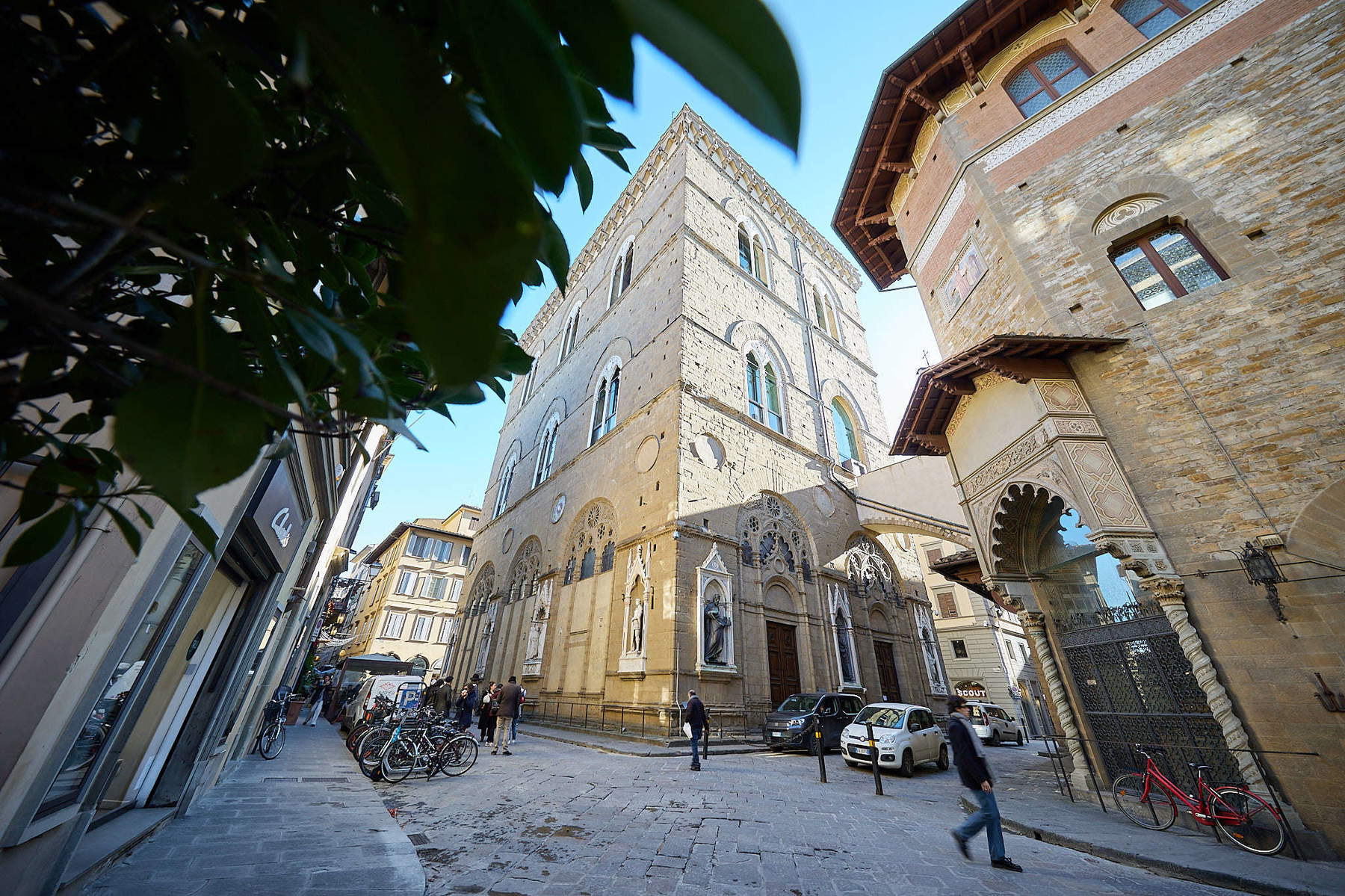
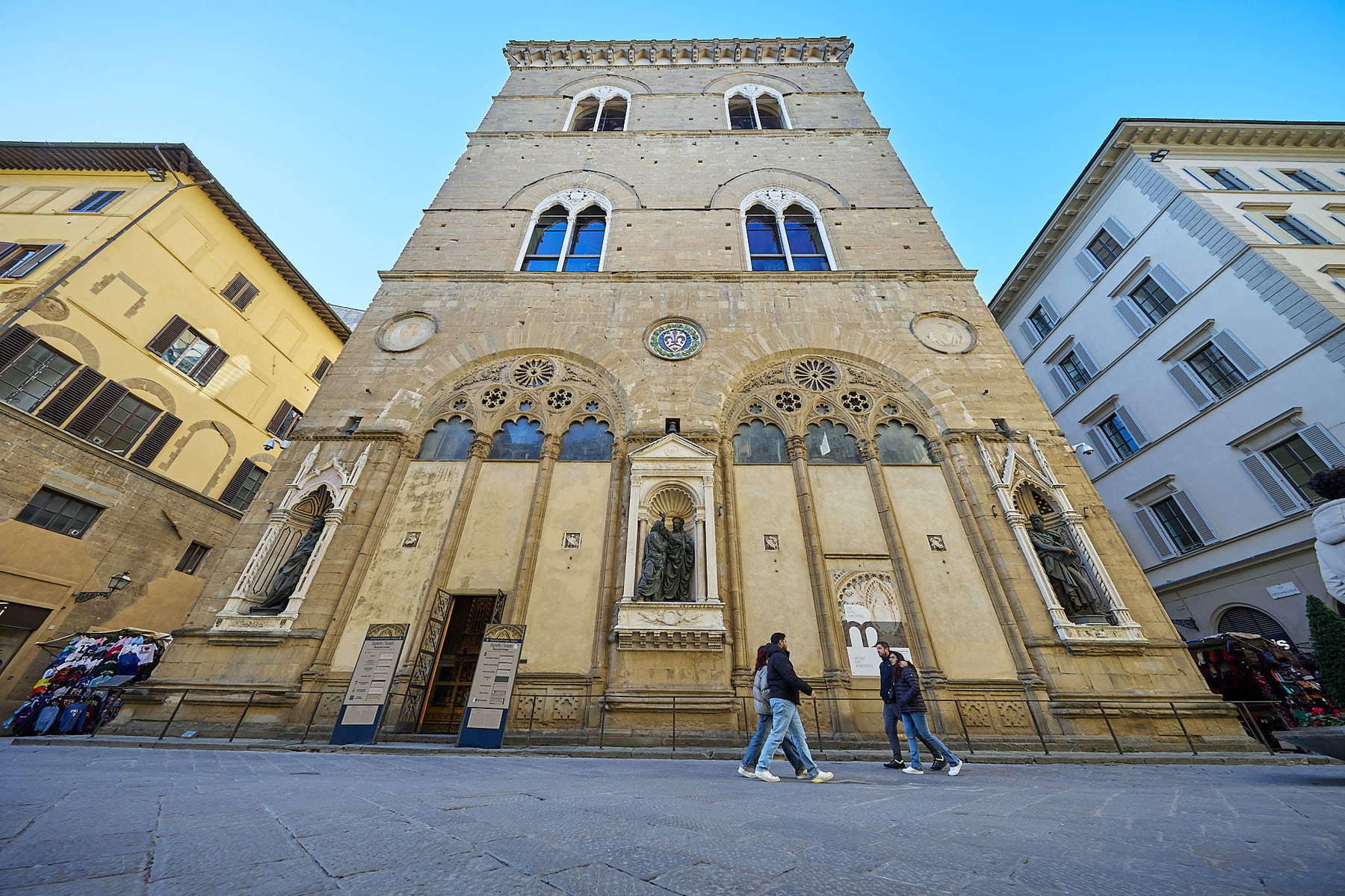
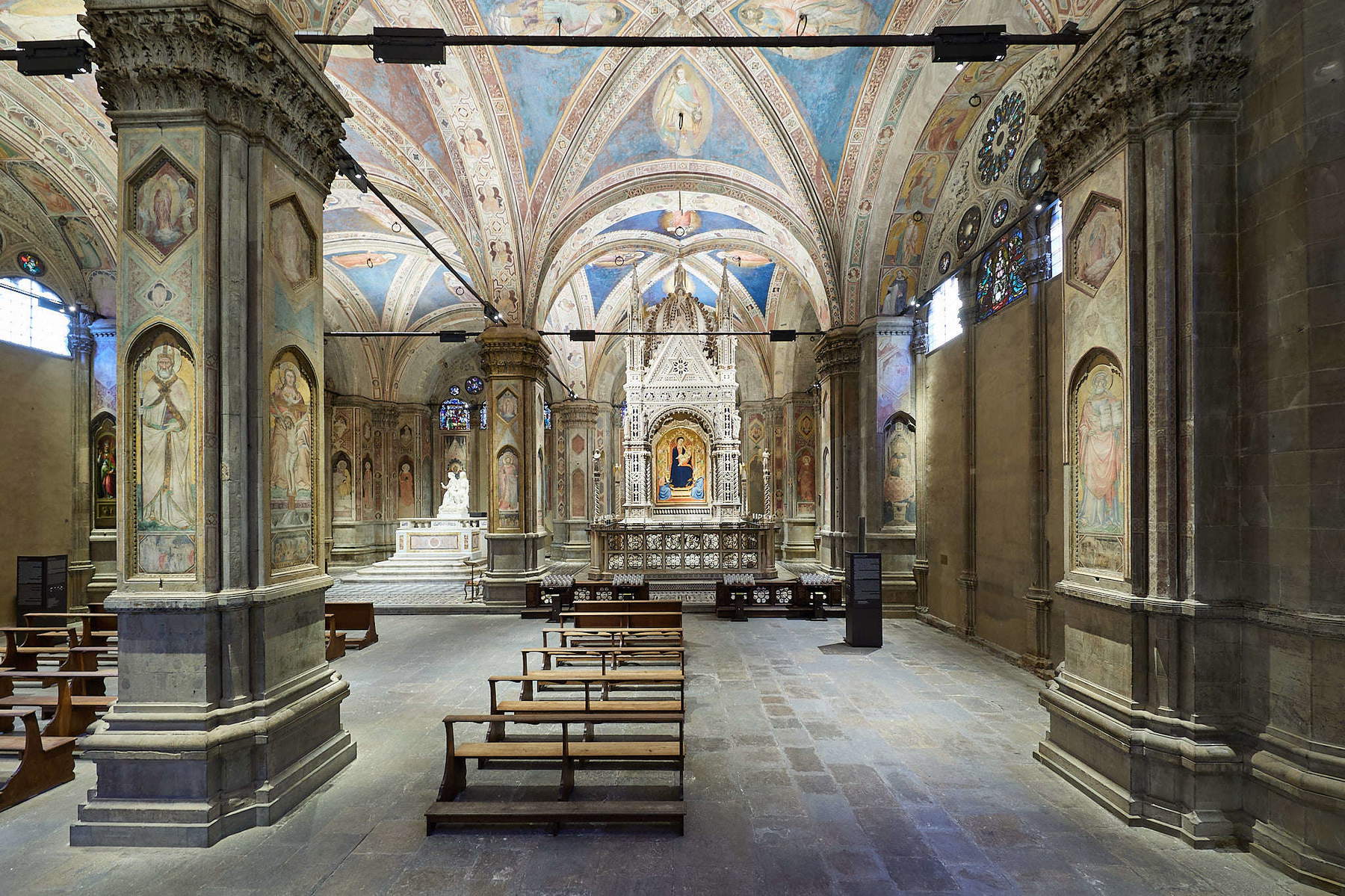
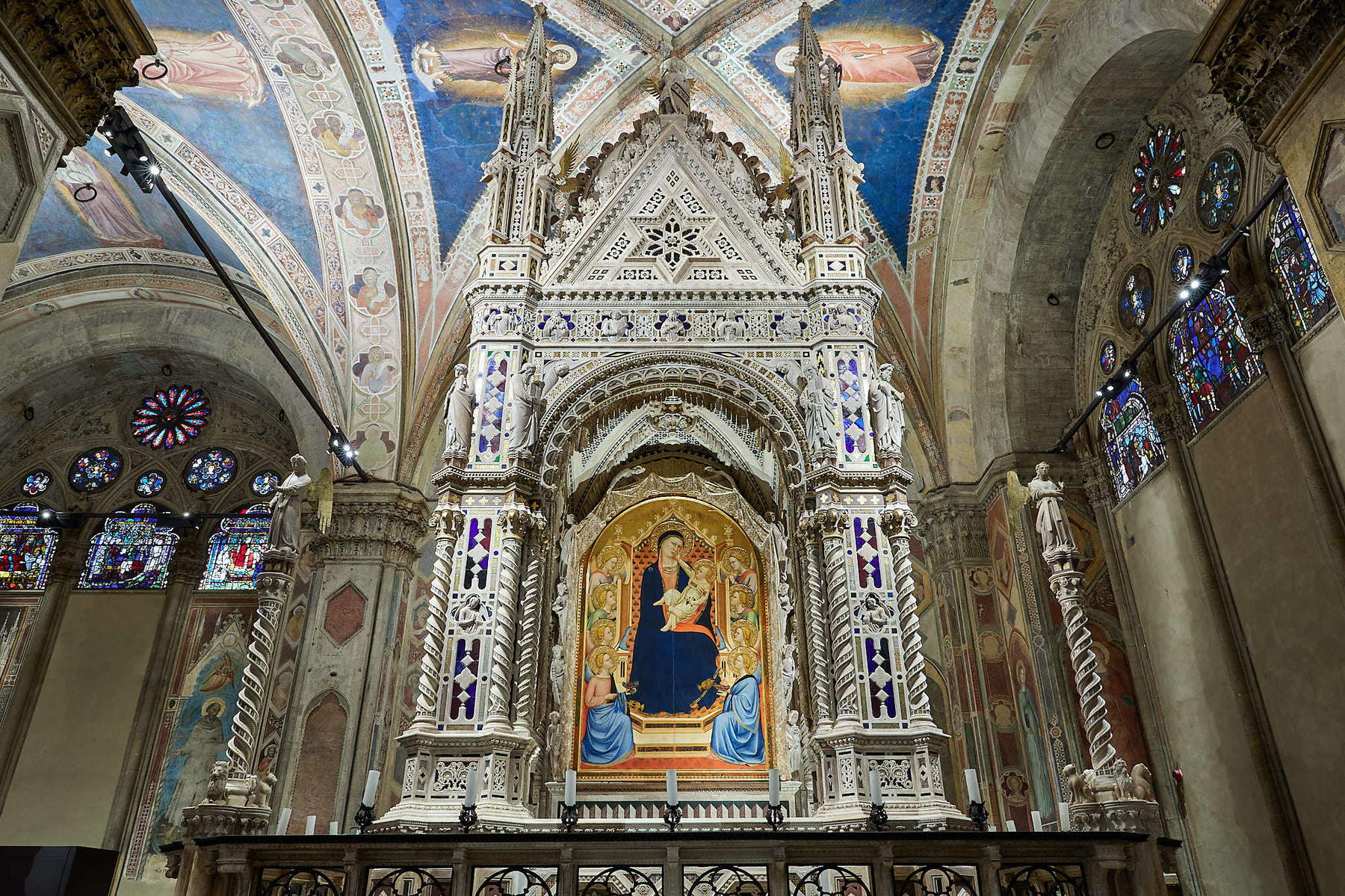
The temporary closure of the Orsanmichele Complex has also made it possible to undertake a substantial series of extraordinary restoration and maintenance operations on the sculptures, wall paintings, and stone vestments of the Church and some of the famous statues housed in the Museum, as well as the creation of supports to secure the works, interventions these directed by Benedetta Matucci art historian official and head of the Orsanmichele Complex with Benedetta Cantini, restorative official of the Bargello Museums. In the church, where the restorations were conducted with careful dedication by Bartolomeo Ciccone, Gabriela Simoni and Muriel Vervat, it was possible to carry out a complete dusting of the tabernacle of theOrcagna (five years after the previous extraordinary maintenance) as well as of the altar with the group of the Virgin and Child and Saint Anne by Francesco da Sangallo, and of the panel by Bernardo Daddi, the latter of which underwent a methodical check of its conservative state.
In the apsidal part of the church, most of the walls have been restored, thanks to the cleaning of the small columns at the base of the large three-mullioned windows and the restoration of the plugging plasters; moreover, thanks to the removal of the old sacristy leaning against the northeast wall, now replaced by a new closet structure detached from the wall, some portions of the frescoes depicting St. Dominic and St. Francis, on which restoration work had to be done, have become visible again. Also in the apse area, all the bases of the six pillars of the bays, which were quite dirty due to substantial stains and traces of waxy materials that had stratified over time, were then restored. A significant recovery was that of the paintings on the faces of three pillars, depicting St. John the Evangelist, St. Barnabas and St. Peter, located in the northeast and southeast bays, whose state of preservation was quite degraded due to severe plaster detachment, lifting and disintegration of the pictorial film. The intervention of cleaning, and painting retouching by glazing, and neutral (where it was not possible to integrate the painting), restored unity to the pictorial cycle, particularly to the piece with the figure of St. Barnabas. Finally, an integral campaign of monitoring and maintenance of the vaults was conducted: already five years ago all the frescoes on the ceiling were monitored to assess their state of conservation, and on that occasion action was taken with numerous injections of premixed mortar to make the layers of plaster adhere to each other and to the wall structure. The new intervention was able to take advantage of the previous mapping to reevaluate the state of deterioration and the presence of new detachments, confirming how important periodic monitoring and maintenance interventions are in the context of cultural heritage.
Instead, during the course of the work on the second floor of the museum, thanks to the special arrangement of a series of site areas, it was possible to undertake some extraordinary restoration and maintenance work on some famous masterpieces preserved here. The statue of Sant’Eligio by Nanni di Banco, previously restored in 1989, was the subject of extraordinary maintenance by Gabriella Tonini, who conducted a punctual and careful refinement of the cleaning of the stone surface, which had been made considerably uneven due to the presence of dark halos due to ancient surface treatments, and to the residues of the ancient “bronzing” that affected all the statues in the past. Thanks to the use of laser technology, the residues of bronze patination on the miter and between the curls of the beard and hair were removed, enhancing the traces of gilding, still visible to the naked eye.
As part of the public partnership agreement stipulated in 2023 between the Bargello Museums and the Opificio delle Pietre Dure to monitor the conservation status and disassembly operations of the statues during the Orsanmichele Museum works, Lorenzo Ghiberti’s St. Matthew was maintained. The work was expertly conducted by the restorers of the Bronzes and Ancient Arms Sector (Stefania Agnoletti, Maria Baruffetti, Annalena Brini and Elisa Pucci), in an educational worksite that also involved fourth-year students of the Scuola di Alta Formazione Studio (PFP4-Course No. 31). Previously restored by the Opificio in 2005, Ghiberti’s monumental bronze has now undergone maintenance activities inherent in a review of the cleaning and protection of the copper alloy surfaces and chloride inhibition. Of particular note is the recovery of the capital letters of the book and the sclera of the eyes, the agemina decoration of which has become perfectly legible again thanks to the use of laser methodology.
Two decades after the 2000-2001 restoration, it was then necessary to carry out a conservative revision of the two bronzes of Saint Stephen by Ghiberti and Saint John the Evangelist by Baccio da Montelupo by Nicola Salvioli. A generalized cleaning was conducted to remove the old protective coatings, which had altered to the point that they no longer completely fulfilled their function and which, particularly in certain areas, obscured the full legibility of the sculpture. This was followed by a careful and targeted control of the outbreaks of active corrosion on the surface, most localized in the most hidden areas of the modeling, and their subsequent removal. Particular care was taken to attenuate the chromaticity of certain old patinas of purplish hue used in the past to tune the surface, but which it was not convenient to remove.
In anticipation of the repositioning of Nanni di Banco’s Four Crowned Saints, it was finally decided to restore the ancient Portovenere marble pediment, which had been fractured in three parts following the work’s transfer from the tabernacle to the museum in 2001. Once the sculptural group had been relocated to its new base, the gaps between the three blocks of marble were also concealed, recomposing the supporting plane of the four figures, originally filled in the niche by a mortar casting. The missing parts were reconstructed in resin thanks to an elaborate design by Mattia Mercante, who acquired the preliminary data for printing using 3D scanning technology. Appropriate supports for securing a series of sculptures were made by Fucina Ervas, in collaboration with the designers, taking into account specific handling and staging needs, thanks to an advanced system of adjustable elements and attachments.
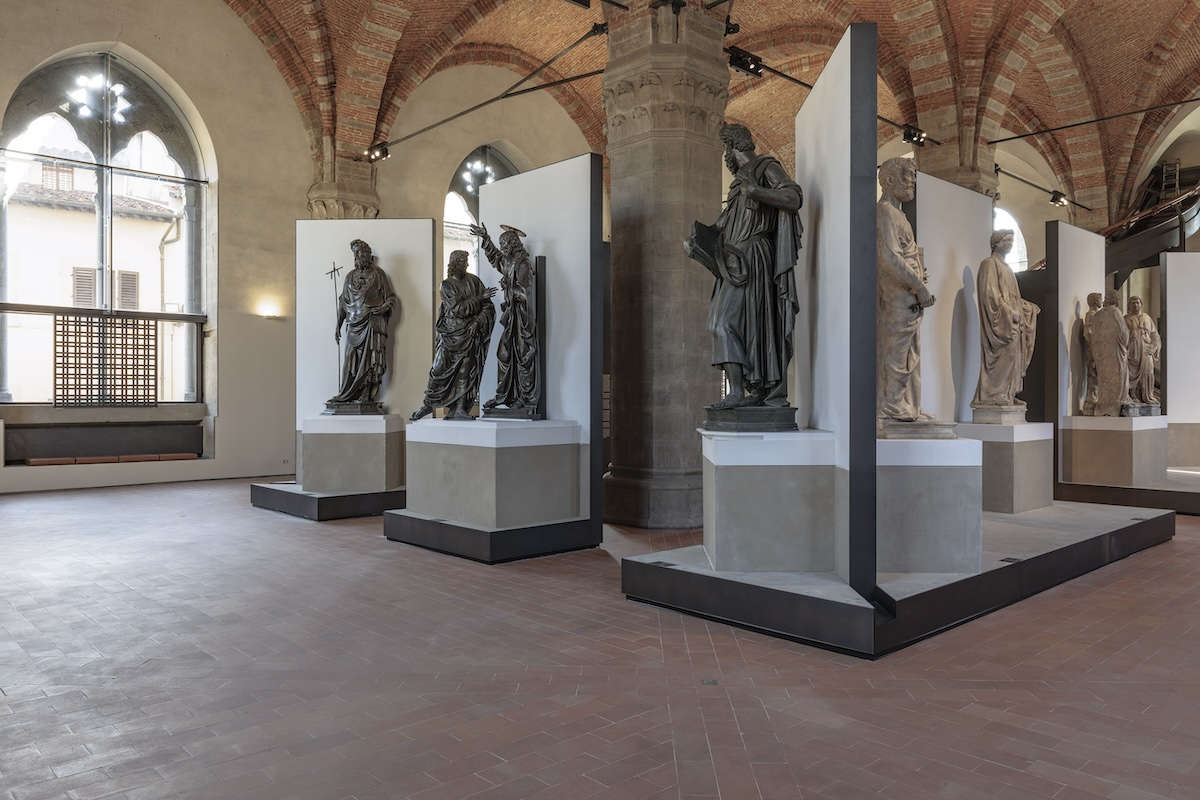
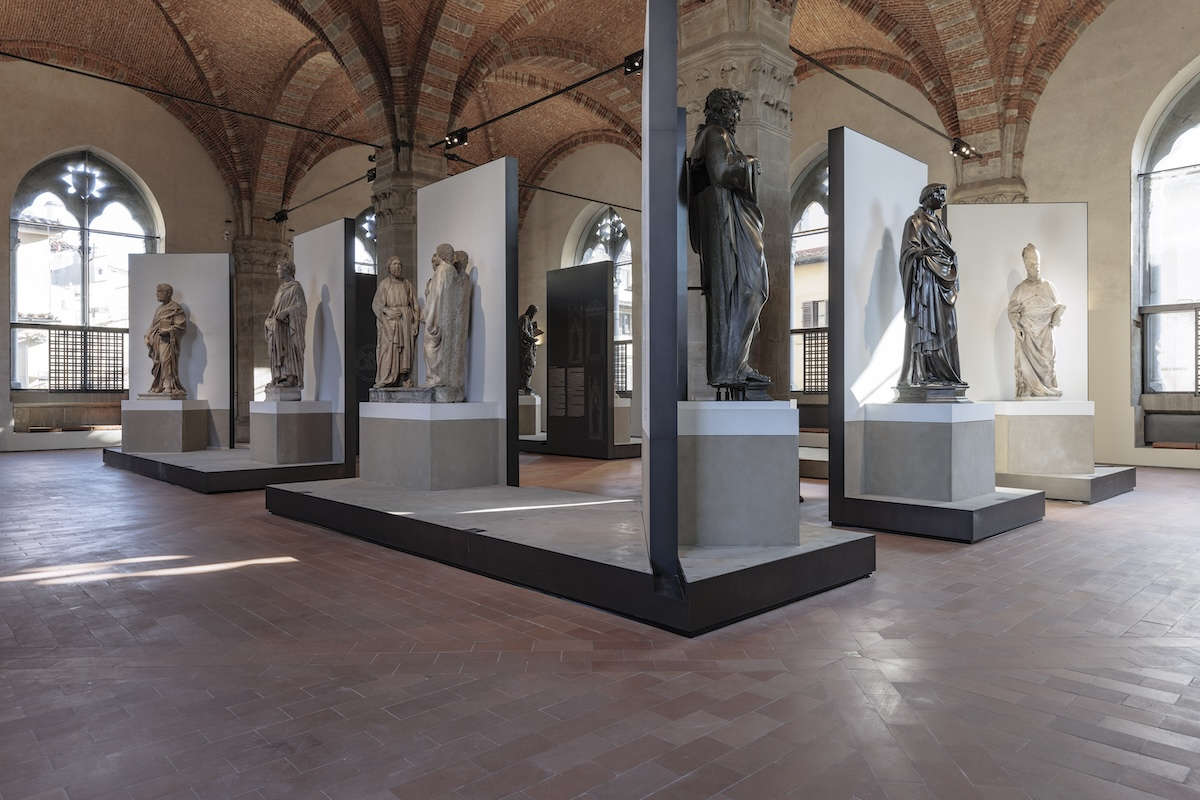
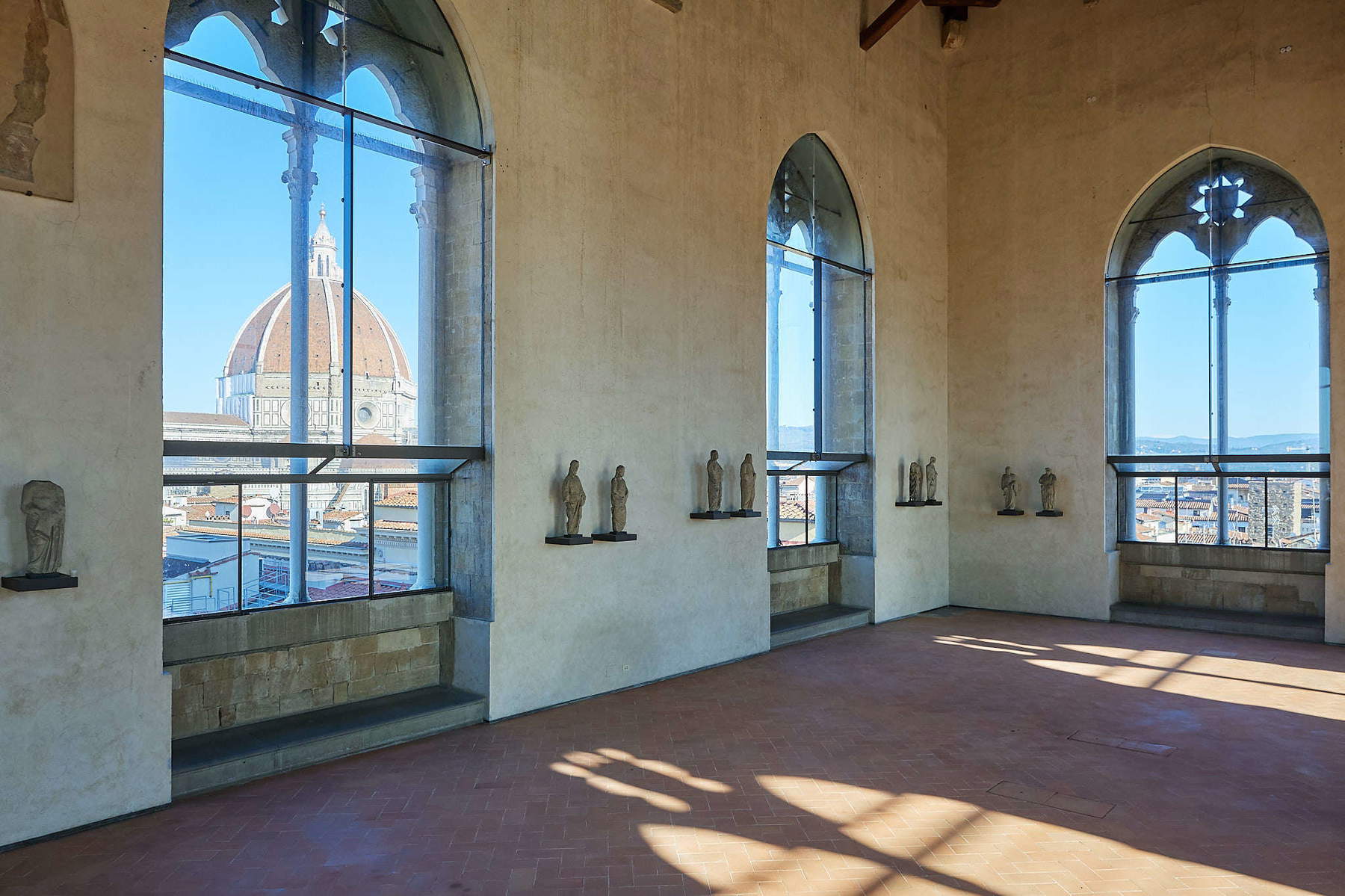
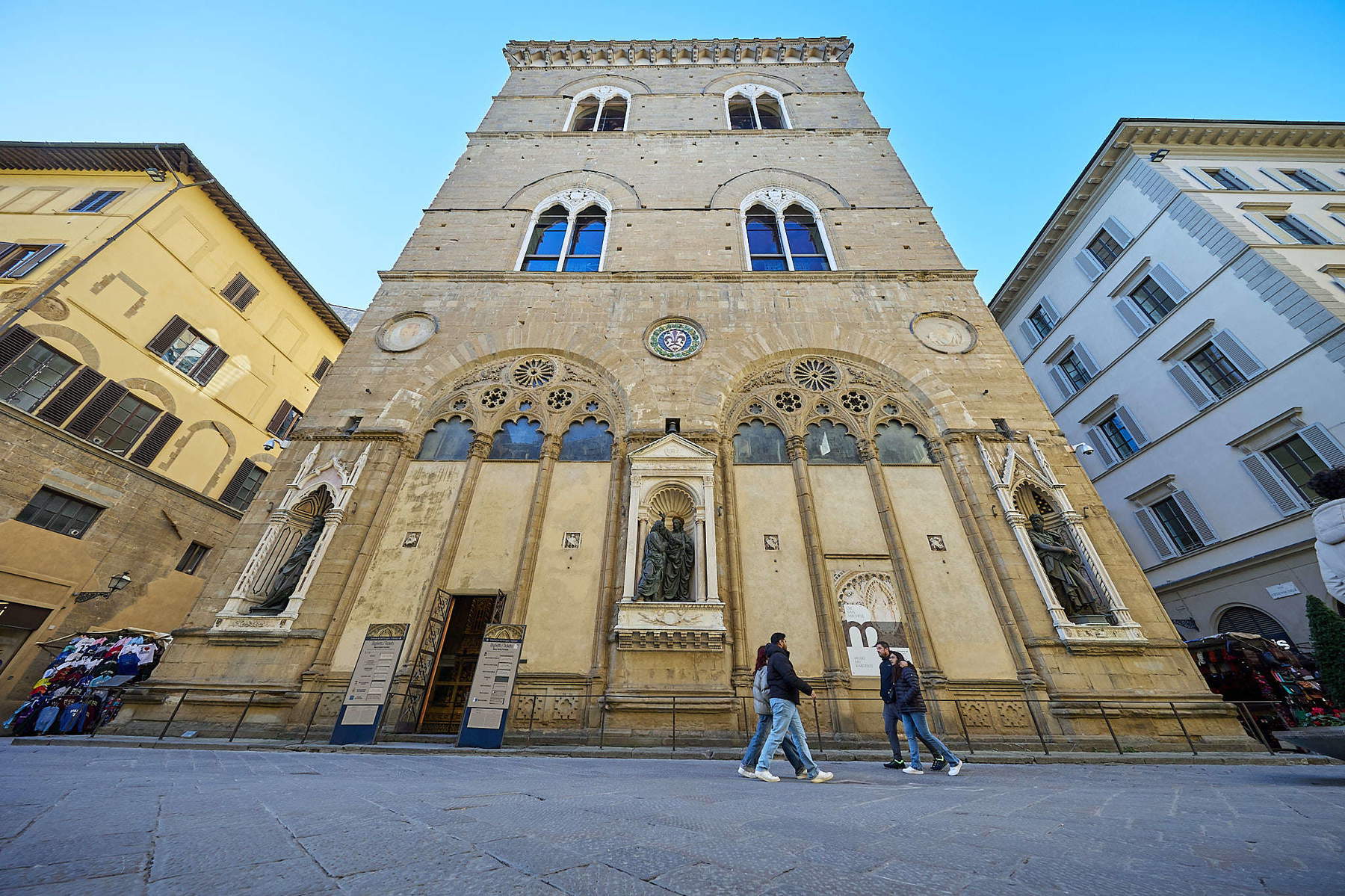
“A truly amazing restoration and rearrangement intervention,” says Mayor of Florence Dario Nardella, “that will allow the viewer to find inside the museum the original placement of the statues as they were outside, thus increasing the effectiveness and suggestion of the visit. I am also pleased that now the museum will extend its opening hours, allowing visitors more time to discover the beauty of this treasure chest in the center of Florence.” “This valuable work,” adds Nardella, "is a worthy seal on the extraordinary years experienced by director Paola D’Agostino, who ends her Florentine term but leaves us a legacy of passion, care, study and perseverance for our extraordinary artistic heritage.
“Orsanmichele reopens,” comments Superintendent Antonella Ranaldi. “What will it be like? Many people will ask themselves. During the closing period, from the stained glass window on Via Calzaioli, tourists and curious passersby peered admiringly toward the interior where restorers were busy dusting the great Orcagna tabernacle. The Orsanmichele church opens up and shows itself on the outside. Thanks to new compasses that allow the large doors to be left open, the interior can be seen from the stained glass windows from Via dell’Arte della Lana. It is an invitation to enter, but not only that, it is an idea of accessible, open-door beauty, enhanced by the new and successful interior lighting, which enhances the stained glass windows, the great vaults and the sculptural masterpieces that make it splendid. A peculiar church, very civic, which in its long life has hosted mixed functions, church, granary, archive, museum. It has seen on its skin, between the fourteenth and fifteenth centuries, artists still committed to the late Gothic stylistic features-which we now admire in amazement-overtaken by the wind of renewal of the makers of the early Florentine Renaissance. A transition between neighboring generations. The great statues of the protectors of the Arts of Florence, stood superb and majestic, in a contest between artists and between guilds of the arts. In the new arrangement by the Map Architetti and Natalini Architetti studios,” Ranaldi continued, “the statues were raised, because they were designed to be seen from below. The original frontality was sought by placing white backdrops behind each of them, creating a path that opens to diagonal views. I thank for this and much more Paola D’Agostino, a valuable colleague whom I would love to keep here. In her eight years as director, she has accomplished so much. If I think only of the last few months, I have seen the successful inauguration of the new exit of the Medici Chapels, admired Donatello’s Madonna and Child, acquired by the state and exhibited at the Bargello, and today conclude her tenure with the wisely renovated Orsanmichele reopening, it has been a real pleasure for me to work with D’Agostino.”
“On the occasion of the reopening,” explained Benedetta Matucci, curator of the Orsanmichele Museum, “ the public will be able to also admire the results of numerous conservation and installation interventions, on wall paintings, statues and stone vestments, that restorers and technicians conducted during the months of closure, in an atmosphere of effective collaboration, ideally comparable to that which once had to animate the many workers involved in the construction work of the 14th-century building site, and with a common feeling of respect for the masterpieces of Orsanmichele.”
“Working for Orsanmichele,” explained architects Tommaso Barni and Fabrizio Natalini, “was an extraordinary opportunity to give, with a new architectural intervention, a new reading to the 14th-century factory and the masterpieces of Renaissance sculpture.”
“I am particularly happy,” said the director of the Bargello Museums, Paola D’Agostino, “to close my eight years in office with the restitution to the city of Florence of the monumental complex of Orsanmichele, which represents the fulcrum of Florence’s civic and religious life, its history and the pride of the guilds. On this singular day on which I take my leave after eight years and on which I present a balance sheet of my tenure, I am pleased to have beside me the major stakeholders, who over these years have ensured that the Bargello Museums have grown, completed worksites and become a point of reference for visitors to this extraordinary city. Over these years there has been intense dialogue and effective collaboration with the Soprintendenza per i Beni Architettonici e Paesaggistici of the city Florence and the provinces of Prato and Pistoia, a constant relationship with the Region of Tuscany, the Municipality of Florence, the Curia and the professionals who have worked on the various projects, and I am delighted that today’s press conference is an opportunity to present a true social balance sheet: How much the Bargello Museums have produced and impacted not only the economic and cultural fabric but also the relationships with stakeholders in the area. I am proud that the Ministry of Culture has invested extraordinary funds and has understood the sense and importance of a state complex that is not only the historical memory of Florentine artistic excellence, but also of our national identity because it is precisely here that at the end of the nineteenth century it was chosen to hold the Lecturae Dantis of the Società Dantesca. I would like to thank all those who in these eight years have dialogued with me and especially the staff serving at the Bargello Museums, who have never spared themselves to close even this construction site in such a short time.”
 |
| Florence, Orsanmichele complex reopens after a year, totally renovated |
Warning: the translation into English of the original Italian article was created using automatic tools. We undertake to review all articles, but we do not guarantee the total absence of inaccuracies in the translation due to the program. You can find the original by clicking on the ITA button. If you find any mistake,please contact us.